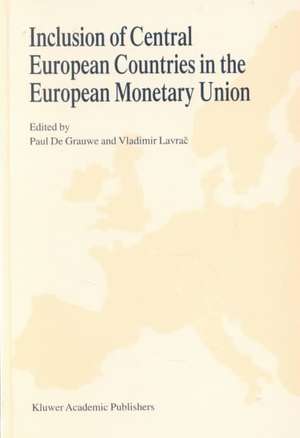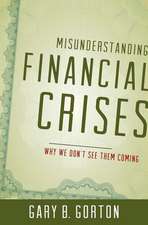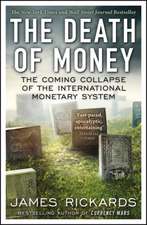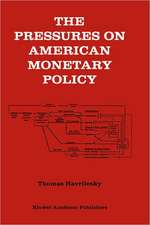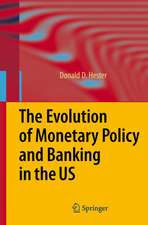Inclusion of Central European Countries in the European Monetary Union
Editat de Paul C. de Grauwe, Vladimir Lavracen Limba Engleză Hardback – 30 dec 1998
| Toate formatele și edițiile | Preț | Express |
|---|---|---|
| Paperback (1) | 941.82 lei 6-8 săpt. | |
| Springer Us – 28 oct 2012 | 941.82 lei 6-8 săpt. | |
| Hardback (1) | 947.85 lei 6-8 săpt. | |
| Springer Us – 30 dec 1998 | 947.85 lei 6-8 săpt. |
Preț: 947.85 lei
Preț vechi: 1155.91 lei
-18% Nou
Puncte Express: 1422
Preț estimativ în valută:
181.36€ • 189.38$ • 149.77£
181.36€ • 189.38$ • 149.77£
Carte tipărită la comandă
Livrare economică 15-29 aprilie
Preluare comenzi: 021 569.72.76
Specificații
ISBN-13: 9780792383857
ISBN-10: 0792383850
Pagini: 223
Ilustrații: XI, 223 p.
Dimensiuni: 155 x 235 x 14 mm
Greutate: 0.51 kg
Ediția:1999
Editura: Springer Us
Colecția Springer
Locul publicării:New York, NY, United States
ISBN-10: 0792383850
Pagini: 223
Ilustrații: XI, 223 p.
Dimensiuni: 155 x 235 x 14 mm
Greutate: 0.51 kg
Ediția:1999
Editura: Springer Us
Colecția Springer
Locul publicării:New York, NY, United States
Public țintă
ResearchDescriere
The creation of the European Economic and Monetary Union (EMU) and the introduction of the euro is a historical event for the EU countries. The debates on the desirability of the EMU provoked a vast economic literature dealing with the theory of the optimum currency area, costs and benefits of the EMU, symmetric vs. asymmetric shocks, alternative mechanisms of adjustment in a monetary union and so forth. Until recently, for the Central European candidate countries for a full membership in the EU, these issues seemed to be too far away, as they concentrated on devising their own monetary and exchange rate systems suitable for their transition period. The challenges of the EMU for the Central European countries were practically not dealt with in both Western and Eastern economic literature. The present book aims to fill this gap, by focusing on the most direct issue of relevance for the Central European countries with respect to the EMU - why, how and when these countries are expected to join the EMU. The papers included in this volume study the relationship between the EU accession process of the Central European candidate countries and their involvement in the process of European monetary integration.
Cuprins
Preface. 1. Introduction. Challenges of European Monetary Union for Central European Countries; P. De Grauwe, V. Lavrac. 2. Are Central European Countries Part of the European Optimum Currency Area? P. De Grauwe, Y. Aksoy. 3. Slovenian and European Trade Structures; D. Gros, G. Vandille. 4. Fiscal Consolidation in the Central European Countries and European Monetary Union; P. De Grauwe, V. Lavrac. 5. Exchange Rate Policy of Central European Countries in the Transition to European Monetary Union; G. Tullio. 6. Inclusion of Central European Countries in the European Monetary Integration Process; V. Lavrac. 7. Integrating Central and Eastern Europe into the European Union: The Monetary Dimension; P. Backé. 8. Echoing the European Monetary Integration in the Czech Republic; O. Dedek. 9. Monetary Arrangements and Exchange Rate Regime in a Small Transitional Economy (Slovenia); I. Ribnikar. Index.
